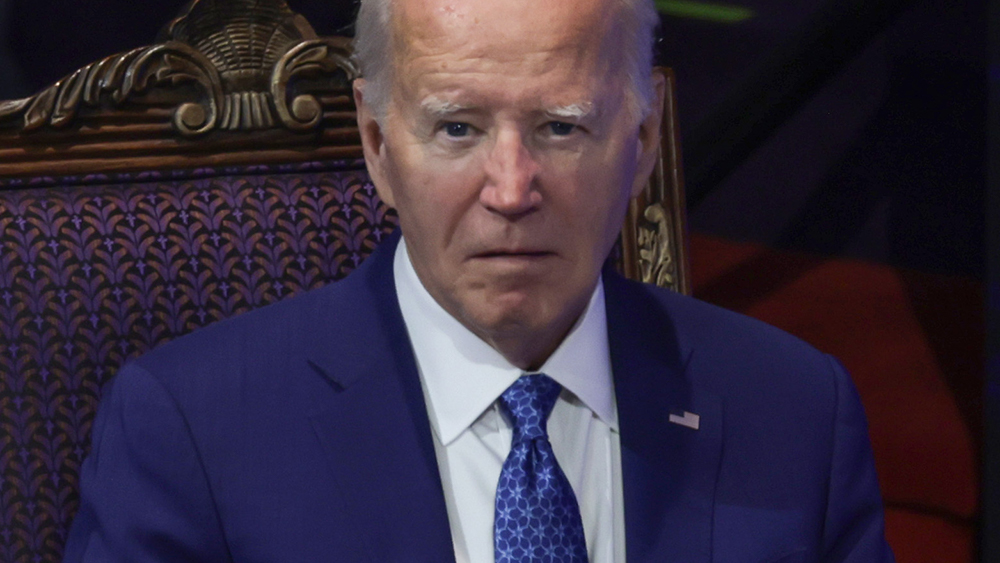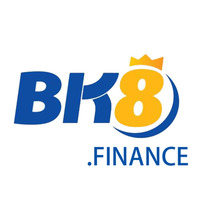Eigen Layer: Security and Performance Scaling Solution for Ethereum
Ethereum is becoming increasingly accessible to more users, and improving user experience is becoming more important. Understanding this, EigenLayer is an ambitious project that aims to improve blockchain performance by adding an additional rollup layer to the system. This layer allows developers to build more complex and efficient decentralised applications (dApps). In this article, Unich Analysis will help readers learn about Eigen Layer.
What is Eigen Layer?
EigenLayer is a pioneering project in introducing the "Restaking" model, a breakthrough solution to solve the problem of layered security in the blockchain ecosystem. "Restaking" is implemented through smart contracts, allowing users to reuse locked ETH (staking) to enhance security for protocols other than Ethereum.
Current Situation
Currently, blockchain networks often face the problem of a split trust network, which means that each decentralised application (dApp) needs to create a separate blockchain with its own trust network. This leads to inefficiency, waste of resources, and hinders the development of dApps.
Ethereum, with its flexible programming capabilities on the Ethereum Virtual Machine (EVM), has solved this problem by providing a common platform for dApps. However, modules that cannot be deployed or verified on the EVM still need to build their own trust network. Recognising this, the development team built Eigenlayer to solve this problem.
How EigenLayer Works
Operating Model
Staking ETH: Users need to stake their ETH on the Ethereum network to become validators on the Ethereum blockchain.
Restaking ETH: Users can “restake” staked ETH on Ethereum by assigning their withdrawal address to the EigenLayer smart contract.
Module Security: Validators participating in restaking will be able to secure modules built on EigenLayer. These modules may include:
Data Availability Layer: Helps secure and distribute data for blockchain applications.
Decentralised Oracle Network: Provides real-world information to smart contracts.
Bridge Networks: Connect blockchains together, allowing assets to be transferred between them.
Decentralised Sequencer Networks: Manage the ordering of transactions on rollup networks.
Slashing: If a validator acts fraudulently, they will be punished by being slashed, which means that some or all of their staked ETH is locked. This ensures that validators act honestly to protect the “restaken” modules.
Illustrative Example
Suppose a project wants to build a decentralised data availability layer. The project needs a large amount of ETH to secure the system.
With EigenLayer, the project can “hire” validators who stake ETH on Ethereum to secure the data availability layer.
The validators will assign their withdrawal addresses to the EigenLayer smart contract, and at the same time commit to securing the data availability layer.
If validators act fraudulently, they will have their staked ETH slashed.
Restaking Mechanism
EigenLayer is an ambitious project that aims to solve the problem of layered security in the blockchain ecosystem. It achieves this through the Restaking mechanism, which is built on two main ideas: Pooled Security and Free-Market Governance.
Pooled Security
The Restaking mechanism creates an optimal security system called Pooled Security. This system allows protocols to leverage the security of the Ethereum network while making the cost of attacking the protocols significantly higher.
Specifically, instead of each protocol having to build its own security network, it can “rent” security from EigenLayer’s security pool. This is done by using ETH which has been staked to secure Ethereum as collateral. Participating validators will have to agree to new slashing conditions on their stake, ensuring that they will act honestly to protect the protocols being secured.
Free-Market Governance
EigenLayer creates a competitive market for Pooled Security, determined by supply and demand. Validators are not required to provide Pooled Security at all. Instead, they have the ability to define their own set of risk and reward parameters before providing services to a given protocol. This allows validators to selectively choose which protocols to provide services to.
EigenLayer Applications
EigenLayer can be used to create many new applications and services on top of existing blockchain networks. Here are some examples:
Build dApps with Advanced Features: EigenLayer enables developers to build dApps with new features like enhanced security, scalability, and cross-platform interoperability.
Provide Blockchain-Based Services: EigenLayer can be used to provide new services like decentralised data storage, identity authentication, and permission management.
Promote Blockchain Adoption: EigenLayer helps make blockchain more usable and accessible for businesses and individuals.
Information about the EIGEN Token
Token Name: Eigenlayer
Ticker: EIGEN
Blockchain: Ethereum
Token Contract: Updating
Token Type: Utility, Governance
Max Supply: 1,670,000,000
Circulating Supply: Updating
Currently, EIGEN has not released specific information about the release date and token allocation over time, so Unich Analysis will update when detailed information is available.
Roadmap
The project has not yet announced its roadmap in the near future, so we will update it when the project is announced as soon as possible.
Development Team
Sreeram Kannan (CEO, Founder): A reputable expert in the blockchain field, with teaching and research experience at the University of Washington. His leadership of the UW-Blockchain-Lab and his publication of more than 20 blockchain-related articles show his deep expertise and innovative spirit.
Calvin Liu (CSO): His experience at Compound, a leading decentralised finance platform, shows his deep understanding of the DeFi market and his ability to develop effective strategies.
Chris Dury (COO): His experience working at Amazon, a giant technology company, shows his effective management skills and ability to make sound strategic decisions.
Soubhik Deb (Engineering): A promising researcher with experience at the University of Washington Blockchain Lab. The fact that he is pursuing a PhD shows that he has professional knowledge and deep research ability.
Investors
With its potential, Eigenlayer has received investment from many famous investment funds in the market such as a16z, Blockchain Capital, Polychain Capital, Hack VC, etc.
Benefits of Using EigenLayer
Improved Security for Modules: Modules secured by ETH staked through EigenLayer have a higher level of security, protected by the same validator network of Ethereum.
Make the Most of Staked ETH: Users can use their staked ETH to secure many different modules, increasing their income from staking.
Accelerating the Development of Modules: EigenLayer enables developers to build new and innovative modules, without having to create a separate trust network for each module.
EigenLayer Potential and Challenges
Potential
Expanding the Blockchain Application Space: EigenLayer expands the application space of blockchain by enabling the construction of new modules such as blockchain networks, middleware, and modular blockchain layers. This allows developers to create a wider range of dApps, from DeFi applications to identity management systems, oracle networks, and blockchain bridges.
Improving Performance and Security: EigenLayer improves the performance of blockchain networks by sharing resources and capabilities among multiple dApps. By using a larger validator pool, EigenLayer also improves the security of modules built on the platform, increasing user trust.
Promoting Decentralisation: EigenLayer can promote decentralisation by creating a market for modules that can attract validators to run nodes in-house. This makes the blockchain system more distributed, minimising the risk of power being concentrated in a single entity.
Challenges
Operator Collusion: A group of operators can collude to attack multiple modules at once, leading to insecurity.
Slashing Incidents: Modules can have vulnerabilities that can lead to unexpected slashing of honest users.
Conclusion
EigenLayer is a groundbreaking technology that promises to revolutionise the blockchain industry. The platform has the potential to open up many new possibilities for existing blockchain networks, making them more efficient, robust, and easier to use. EigenLayer is in its early stages of development, but it has already attracted significant interest from investors and developers. The project has great potential to change the blockchain industry, and it will be interesting to follow its development in the coming years. Above is all the information about EigenLayer that Unich Analysis has compiled. Thank you for your attention.
Posts
The realm of finance can be a mythical beast for students – guarded by perplexing theories, riddled with labyrinthine calculations, and constantly evolving market trends. For those facing down demanding finance assignments, navigating this landscape can feel like battling a fire-breathing dragon. But fear not, brave scholars! There's a legendary weapon at your disposal: https://www.financeassignmenthelp.io/ online.
AI chatbot development
Call Centre Software in Thailand
In the bustling business landscape of Thailand, call centre software in Thailand has emerged as an essential tool for enterprises seeking to enhance their customer service operations. This software helps manage inbound and outbound calls, track customer interactions, and streamline communications, ultimately leading to improved customer satisfaction and operational efficiency. Leading providers in Thailand offer robust solutions that integrate seamlessly with existing systems, providing features such as automatic call distribution, interactive voice response, and real-time analytics. The adoption of such technology is particularly vital in a market where customer service excellence is a key differentiator.
Enterprise Resource Management
Enterprise Resource Management (ERM) systems are crucial for the efficient operation of large organizations. These systems integrate various business processes, including finance, human resources, supply chain management, and customer relationship management, into a single coherent system. By centralizing data and automating processes, ERM solutions help businesses reduce operational costs, improve accuracy, and enhance decision-making capabilities. Modern ERM solutions also offer cloud-based services, enabling remote access and collaboration, which is particularly beneficial in today’s increasingly mobile and distributed work environments. In Thailand, companies are increasingly turning to ERM systems to stay competitive and agile in a fast-paced market.
Custom Software Development Services
Custom software development services cater to the unique needs of businesses that cannot be met by off-the-shelf solutions. These services involve the creation of bespoke software tailored to specific business processes, goals, and requirements. Custom software can provide a competitive advantage by addressing the precise challenges a business faces and integrating seamlessly with existing systems. In Thailand, a thriving tech industry supports a wide range of custom software development services, from initial consultation and design to development, testing, and maintenance. Companies opting for custom solutions benefit from enhanced efficiency, scalability, and the ability to adapt quickly to changing market conditions.
Mobile Application Development
The proliferation of smartphones has made mobile application development a critical component of business strategy. Mobile apps provide a direct channel to engage customers, streamline operations, and enhance service delivery. In Thailand, mobile app development is a dynamic sector, with developers creating innovative applications that cater to various industries, including retail, finance, healthcare, and entertainment. These apps leverage advanced technologies such as artificial intelligence, augmented reality, and blockchain to offer unique user experiences and functionalities. Businesses investing in mobile app development can expect to see increased customer engagement, improved brand loyalty, and new revenue streams.
Odoo Myanmar
Odoo is an open-source suite of business applications that cover various business needs, including CRM, e-commerce, accounting, inventory, and project management. In Myanmar, Odoo has gained popularity due to its flexibility, scalability, and affordability. Businesses in Myanmar leverage Odoo to streamline their operations, reduce costs, and improve efficiency. The software’s modular approach allows companies to start with basic functionalities and expand as their needs grow. With a growing number of local partners and developers, Odoo’s implementation in Myanmar is becoming increasingly accessible, making it a viable option for businesses of all sizes looking to enhance their operational capabilities.
Social Media Monitoring Tools
In the age of digital communication, social media monitoring tools have become indispensable for businesses looking to manage their online presence and reputation. These tools help track mentions, engagements, and sentiments across various social media platforms, providing valuable insights into customer opinions and market trends. In Thailand, social media is a significant aspect of daily life, and businesses leverage monitoring tools to stay connected with their audience, respond to feedback, and refine their marketing strategies. Advanced features such as sentiment analysis, competitor benchmarking, and real-time alerts enable businesses to make data-driven decisions and proactively manage their brand image.
Visit here: https://vintechsolutions.co/our-products/
Videos
For terrorist organizations to buy weapons, ammunition, get trained and even travel they need money. Money is the lifeblood of terrorist groups. But, nowadays in today’s total government surveillance, how are terrorists able to finance their activities? The so-called State Sponsors of Terrorism is known to be more of a U.S. government and State Department weapon to exert political pressure on “enemy” countries. So, is laundering money still the preferred way for terrorists to finance their operations on a grand scale? Loretta Napoleoni, expert on terrorist financing and author of “Technocapitalism: The Rise of the New Robber Barons and the Fight for the Common Good”, explains where the next financing battle is against terrorist financing.
This clip is right out of Episode 5 of our Great Taking series. If you missed it, you can watch the whole episode here FREE: https://peak-prosperity.com/LegalTriggers
Early bird access ends today! Get access for $99, less if you are a member. Protect you and your family today with the knowledge from our upcoming WEBINAR: "How To Protect Your Wealth from The Great Taking". Join us along with David Rodgers Webb, Dr. Susanne Trimbath and more to learn how to protect your wealth. Learn more here: https://Peak-Prosperity.com/Event2
Several indicators are screaming “recession!” But the “”markets”” are happily rising higher all over the globe on an obvious wall of central bank liquidity. Can ‘they’ print us out of the nose-dive? What if they don’t? What should investors be considering? Tune in to find out.
Want a free no obligation review with Paul and his team? Click here www.PeakFinancialInvesting.com
Join the conversation here: https://peakprosperity.com/is-a-recession-on-the-way-finance-university-with-paul-kiker/
For more information on our amazing new webinar series - Prospering With Integrity with Bret Weinstein, Ed Dowd and Peter St Onge, click here:
http://peak.fan/integrity
First and second episodes available now!. Use PWI25 today for 25% off the series, or join under an annual subscription to PeakProsperity.com with Peak30 and get access to the webinar series FREE!
? NOTE: Annual members to PeakProsperity.com get all episodes of Prospering with Integrity (and much more!) as a perk of the subscription. Watch more of our videos here to find hidden codes to use on our membership! ?️♂️?
Order THE CRASH COURSE here:
https://www.barnesandnoble.com/w/the-crash-course-chris-martenson/1142015889?ean=9781394168866
Wanna buy me a coffee? https://www.buymeacoffee.com/PeakProsperity
Join the #1 resilience community today!
https://peakprosperity.com/membership/
FINANCIAL DISCLAIMER. PEAK PROSPERITY, LLC, AND PEAK FINANCIAL INVESTING ARE NOT ENGAGED IN RENDERING LEGAL, TAX, OR FINANCIAL ADVICE OR SERVICES VIA THIS WEBSITE. NEITHER PEAK PROSPERITY, LLC NOT PEAK FINANCIAL INVESTING ARE FINANCIAL PLANNERS, BROKERS, OR TAX ADVISORS. Their websites are intended only to assist you in your financial education. Your personal financial situation is unique, and any information and advice obtained through this website may not be appropriate for your situation. Accordingly, before making any final decisions or implementing any financial strategy, you should consider obtaining additional information and advice from your accountant or other financial advisers who are fully aware of your individual circumstances. All information in this video is as accurate as we believe them to be based on current market conditions at the time of recording.
ALSO FOLLOW US HERE:
Twitter: @Chris_martenson
https://rumble.com/c/PeakProsperity
https://odysee.com/@Chris_Martenson:2
Videos
For terrorist organizations to buy weapons, ammunition, get trained and even travel they need money. Money is the lifeblood of terrorist groups. But, nowadays in today’s total government surveillance, how are terrorists able to finance their activities? The so-called State Sponsors of Terrorism is known to be more of a U.S. government and State Department weapon to exert political pressure on “enemy” countries. So, is laundering money still the preferred way for terrorists to finance their operations on a grand scale? Loretta Napoleoni, expert on terrorist financing and author of “Technocapitalism: The Rise of the New Robber Barons and the Fight for the Common Good”, explains where the next financing battle is against terrorist financing.
This clip is right out of Episode 5 of our Great Taking series. If you missed it, you can watch the whole episode here FREE: https://peak-prosperity.com/LegalTriggers
Early bird access ends today! Get access for $99, less if you are a member. Protect you and your family today with the knowledge from our upcoming WEBINAR: "How To Protect Your Wealth from The Great Taking". Join us along with David Rodgers Webb, Dr. Susanne Trimbath and more to learn how to protect your wealth. Learn more here: https://Peak-Prosperity.com/Event2
Several indicators are screaming “recession!” But the “”markets”” are happily rising higher all over the globe on an obvious wall of central bank liquidity. Can ‘they’ print us out of the nose-dive? What if they don’t? What should investors be considering? Tune in to find out.
Want a free no obligation review with Paul and his team? Click here www.PeakFinancialInvesting.com
Join the conversation here: https://peakprosperity.com/is-a-recession-on-the-way-finance-university-with-paul-kiker/
For more information on our amazing new webinar series - Prospering With Integrity with Bret Weinstein, Ed Dowd and Peter St Onge, click here:
http://peak.fan/integrity
First and second episodes available now!. Use PWI25 today for 25% off the series, or join under an annual subscription to PeakProsperity.com with Peak30 and get access to the webinar series FREE!
? NOTE: Annual members to PeakProsperity.com get all episodes of Prospering with Integrity (and much more!) as a perk of the subscription. Watch more of our videos here to find hidden codes to use on our membership! ?️♂️?
Order THE CRASH COURSE here:
https://www.barnesandnoble.com/w/the-crash-course-chris-martenson/1142015889?ean=9781394168866
Wanna buy me a coffee? https://www.buymeacoffee.com/PeakProsperity
Join the #1 resilience community today!
https://peakprosperity.com/membership/
FINANCIAL DISCLAIMER. PEAK PROSPERITY, LLC, AND PEAK FINANCIAL INVESTING ARE NOT ENGAGED IN RENDERING LEGAL, TAX, OR FINANCIAL ADVICE OR SERVICES VIA THIS WEBSITE. NEITHER PEAK PROSPERITY, LLC NOT PEAK FINANCIAL INVESTING ARE FINANCIAL PLANNERS, BROKERS, OR TAX ADVISORS. Their websites are intended only to assist you in your financial education. Your personal financial situation is unique, and any information and advice obtained through this website may not be appropriate for your situation. Accordingly, before making any final decisions or implementing any financial strategy, you should consider obtaining additional information and advice from your accountant or other financial advisers who are fully aware of your individual circumstances. All information in this video is as accurate as we believe them to be based on current market conditions at the time of recording.
ALSO FOLLOW US HERE:
Twitter: @Chris_martenson
https://rumble.com/c/PeakProsperity
https://odysee.com/@Chris_Martenson:2
On this episode of The Cost of Everything we take a closer look at the cost of credit-card ownership, which usually ends up with customers unable to pay off credit-card debt. Host Christy Ai and finance expert Todd ‘Bubba’ Horwitz analyze why credit-card debt is so high in the United States, especially among Generation Z, and how instant gratification comes at a high cost. Also, how can credit cards be a double-edged sword?
I go over what inflation actually is in economic terms. Catch behind-the-scenes posts and help choose my next video topic at:
Patreon: https://www.patreon.com/thepholosopher
Sources and transcript: https://ecency.com/politics/@thepholosopher/what-is-inflation-video-transcript
If you want to become a more philosophical thinker for liberty and stand out from the crowd, pick up Philosophical Voluntaryism. It will equip you with the fundamental reasoning tools needed to maximize your potential and guide you toward a peaceful and prosperous life through the consistent application of Voluntaryist ethical principles.
Get your own copy here: https://amzn.to/3M4KLnx
(affiliate)
#inflation #endthefed #prices #money #economics
Posts
Eigen Layer: Security and Performance Scaling Solution for Ethereum
Ethereum is becoming increasingly accessible to more users, and improving user experience is becoming more important. Understanding this, EigenLayer is an ambitious project that aims to improve blockchain performance by adding an additional rollup layer to the system. This layer allows developers to build more complex and efficient decentralised applications (dApps). In this article, Unich Analysis will help readers learn about Eigen Layer.
What is Eigen Layer?
EigenLayer is a pioneering project in introducing the "Restaking" model, a breakthrough solution to solve the problem of layered security in the blockchain ecosystem. "Restaking" is implemented through smart contracts, allowing users to reuse locked ETH (staking) to enhance security for protocols other than Ethereum.
Current Situation
Currently, blockchain networks often face the problem of a split trust network, which means that each decentralised application (dApp) needs to create a separate blockchain with its own trust network. This leads to inefficiency, waste of resources, and hinders the development of dApps.
Ethereum, with its flexible programming capabilities on the Ethereum Virtual Machine (EVM), has solved this problem by providing a common platform for dApps. However, modules that cannot be deployed or verified on the EVM still need to build their own trust network. Recognising this, the development team built Eigenlayer to solve this problem.
How EigenLayer Works
Operating Model
Staking ETH: Users need to stake their ETH on the Ethereum network to become validators on the Ethereum blockchain.
Restaking ETH: Users can “restake” staked ETH on Ethereum by assigning their withdrawal address to the EigenLayer smart contract.
Module Security: Validators participating in restaking will be able to secure modules built on EigenLayer. These modules may include:
Data Availability Layer: Helps secure and distribute data for blockchain applications.
Decentralised Oracle Network: Provides real-world information to smart contracts.
Bridge Networks: Connect blockchains together, allowing assets to be transferred between them.
Decentralised Sequencer Networks: Manage the ordering of transactions on rollup networks.
Slashing: If a validator acts fraudulently, they will be punished by being slashed, which means that some or all of their staked ETH is locked. This ensures that validators act honestly to protect the “restaken” modules.
Illustrative Example
Suppose a project wants to build a decentralised data availability layer. The project needs a large amount of ETH to secure the system.
With EigenLayer, the project can “hire” validators who stake ETH on Ethereum to secure the data availability layer.
The validators will assign their withdrawal addresses to the EigenLayer smart contract, and at the same time commit to securing the data availability layer.
If validators act fraudulently, they will have their staked ETH slashed.
Restaking Mechanism
EigenLayer is an ambitious project that aims to solve the problem of layered security in the blockchain ecosystem. It achieves this through the Restaking mechanism, which is built on two main ideas: Pooled Security and Free-Market Governance.
Pooled Security
The Restaking mechanism creates an optimal security system called Pooled Security. This system allows protocols to leverage the security of the Ethereum network while making the cost of attacking the protocols significantly higher.
Specifically, instead of each protocol having to build its own security network, it can “rent” security from EigenLayer’s security pool. This is done by using ETH which has been staked to secure Ethereum as collateral. Participating validators will have to agree to new slashing conditions on their stake, ensuring that they will act honestly to protect the protocols being secured.
Free-Market Governance
EigenLayer creates a competitive market for Pooled Security, determined by supply and demand. Validators are not required to provide Pooled Security at all. Instead, they have the ability to define their own set of risk and reward parameters before providing services to a given protocol. This allows validators to selectively choose which protocols to provide services to.
EigenLayer Applications
EigenLayer can be used to create many new applications and services on top of existing blockchain networks. Here are some examples:
Build dApps with Advanced Features: EigenLayer enables developers to build dApps with new features like enhanced security, scalability, and cross-platform interoperability.
Provide Blockchain-Based Services: EigenLayer can be used to provide new services like decentralised data storage, identity authentication, and permission management.
Promote Blockchain Adoption: EigenLayer helps make blockchain more usable and accessible for businesses and individuals.
Information about the EIGEN Token
Token Name: Eigenlayer
Ticker: EIGEN
Blockchain: Ethereum
Token Contract: Updating
Token Type: Utility, Governance
Max Supply: 1,670,000,000
Circulating Supply: Updating
Currently, EIGEN has not released specific information about the release date and token allocation over time, so Unich Analysis will update when detailed information is available.
Roadmap
The project has not yet announced its roadmap in the near future, so we will update it when the project is announced as soon as possible.
Development Team
Sreeram Kannan (CEO, Founder): A reputable expert in the blockchain field, with teaching and research experience at the University of Washington. His leadership of the UW-Blockchain-Lab and his publication of more than 20 blockchain-related articles show his deep expertise and innovative spirit.
Calvin Liu (CSO): His experience at Compound, a leading decentralised finance platform, shows his deep understanding of the DeFi market and his ability to develop effective strategies.
Chris Dury (COO): His experience working at Amazon, a giant technology company, shows his effective management skills and ability to make sound strategic decisions.
Soubhik Deb (Engineering): A promising researcher with experience at the University of Washington Blockchain Lab. The fact that he is pursuing a PhD shows that he has professional knowledge and deep research ability.
Investors
With its potential, Eigenlayer has received investment from many famous investment funds in the market such as a16z, Blockchain Capital, Polychain Capital, Hack VC, etc.
Benefits of Using EigenLayer
Improved Security for Modules: Modules secured by ETH staked through EigenLayer have a higher level of security, protected by the same validator network of Ethereum.
Make the Most of Staked ETH: Users can use their staked ETH to secure many different modules, increasing their income from staking.
Accelerating the Development of Modules: EigenLayer enables developers to build new and innovative modules, without having to create a separate trust network for each module.
EigenLayer Potential and Challenges
Potential
Expanding the Blockchain Application Space: EigenLayer expands the application space of blockchain by enabling the construction of new modules such as blockchain networks, middleware, and modular blockchain layers. This allows developers to create a wider range of dApps, from DeFi applications to identity management systems, oracle networks, and blockchain bridges.
Improving Performance and Security: EigenLayer improves the performance of blockchain networks by sharing resources and capabilities among multiple dApps. By using a larger validator pool, EigenLayer also improves the security of modules built on the platform, increasing user trust.
Promoting Decentralisation: EigenLayer can promote decentralisation by creating a market for modules that can attract validators to run nodes in-house. This makes the blockchain system more distributed, minimising the risk of power being concentrated in a single entity.
Challenges
Operator Collusion: A group of operators can collude to attack multiple modules at once, leading to insecurity.
Slashing Incidents: Modules can have vulnerabilities that can lead to unexpected slashing of honest users.
Conclusion
EigenLayer is a groundbreaking technology that promises to revolutionise the blockchain industry. The platform has the potential to open up many new possibilities for existing blockchain networks, making them more efficient, robust, and easier to use. EigenLayer is in its early stages of development, but it has already attracted significant interest from investors and developers. The project has great potential to change the blockchain industry, and it will be interesting to follow its development in the coming years. Above is all the information about EigenLayer that Unich Analysis has compiled. Thank you for your attention.
The realm of finance can be a mythical beast for students – guarded by perplexing theories, riddled with labyrinthine calculations, and constantly evolving market trends. For those facing down demanding finance assignments, navigating this landscape can feel like battling a fire-breathing dragon. But fear not, brave scholars! There's a legendary weapon at your disposal: https://www.financeassignmenthelp.io/ online.
AI chatbot development
Call Centre Software in Thailand
In the bustling business landscape of Thailand, call centre software in Thailand has emerged as an essential tool for enterprises seeking to enhance their customer service operations. This software helps manage inbound and outbound calls, track customer interactions, and streamline communications, ultimately leading to improved customer satisfaction and operational efficiency. Leading providers in Thailand offer robust solutions that integrate seamlessly with existing systems, providing features such as automatic call distribution, interactive voice response, and real-time analytics. The adoption of such technology is particularly vital in a market where customer service excellence is a key differentiator.
Enterprise Resource Management
Enterprise Resource Management (ERM) systems are crucial for the efficient operation of large organizations. These systems integrate various business processes, including finance, human resources, supply chain management, and customer relationship management, into a single coherent system. By centralizing data and automating processes, ERM solutions help businesses reduce operational costs, improve accuracy, and enhance decision-making capabilities. Modern ERM solutions also offer cloud-based services, enabling remote access and collaboration, which is particularly beneficial in today’s increasingly mobile and distributed work environments. In Thailand, companies are increasingly turning to ERM systems to stay competitive and agile in a fast-paced market.
Custom Software Development Services
Custom software development services cater to the unique needs of businesses that cannot be met by off-the-shelf solutions. These services involve the creation of bespoke software tailored to specific business processes, goals, and requirements. Custom software can provide a competitive advantage by addressing the precise challenges a business faces and integrating seamlessly with existing systems. In Thailand, a thriving tech industry supports a wide range of custom software development services, from initial consultation and design to development, testing, and maintenance. Companies opting for custom solutions benefit from enhanced efficiency, scalability, and the ability to adapt quickly to changing market conditions.
Mobile Application Development
The proliferation of smartphones has made mobile application development a critical component of business strategy. Mobile apps provide a direct channel to engage customers, streamline operations, and enhance service delivery. In Thailand, mobile app development is a dynamic sector, with developers creating innovative applications that cater to various industries, including retail, finance, healthcare, and entertainment. These apps leverage advanced technologies such as artificial intelligence, augmented reality, and blockchain to offer unique user experiences and functionalities. Businesses investing in mobile app development can expect to see increased customer engagement, improved brand loyalty, and new revenue streams.
Odoo Myanmar
Odoo is an open-source suite of business applications that cover various business needs, including CRM, e-commerce, accounting, inventory, and project management. In Myanmar, Odoo has gained popularity due to its flexibility, scalability, and affordability. Businesses in Myanmar leverage Odoo to streamline their operations, reduce costs, and improve efficiency. The software’s modular approach allows companies to start with basic functionalities and expand as their needs grow. With a growing number of local partners and developers, Odoo’s implementation in Myanmar is becoming increasingly accessible, making it a viable option for businesses of all sizes looking to enhance their operational capabilities.
Social Media Monitoring Tools
In the age of digital communication, social media monitoring tools have become indispensable for businesses looking to manage their online presence and reputation. These tools help track mentions, engagements, and sentiments across various social media platforms, providing valuable insights into customer opinions and market trends. In Thailand, social media is a significant aspect of daily life, and businesses leverage monitoring tools to stay connected with their audience, respond to feedback, and refine their marketing strategies. Advanced features such as sentiment analysis, competitor benchmarking, and real-time alerts enable businesses to make data-driven decisions and proactively manage their brand image.
Visit here: https://vintechsolutions.co/our-products/
Top Biden donors in finance and entertainment are pulling their financial support
https://www.naturalnews.com/2024-07-17-democrat-donors-cutting-off-biden-finding-replacement.html

As the calls for President Biden to drop out of the presidential race ramp up following his very public display of cognitive decline during the debate, several mega-donors have been making moves to withdraw their support for him and set up a replacement. One big name is the co-founder of Netflix, Reed Hastings, who handed […]
www.naturalnews.com
wealth recovery services
Title: Recovering Your Lost Funds: Why FundretRievers Is Your Best Online Partner
In today’s digital age, where financial transactions occur online more than ever before, the risk of falling victim to scams and frauds has significantly increased. Many individuals and businesses have unfortunately experienced the devastating loss of funds due to fraudulent activities. If you find yourself in such a situation, you may be wondering if there’s any hope of recovering your money.
Enter FundretRievers, a leading online fund recovery company that has been gaining attention for its exceptional services in recovering lost funds. With a strong reputation and a dedicated team of professionals, FundretRievers stands out as a reliable partner in navigating the complexities of fund recovery.
Why Choose FundretRievers?
1. Expertise and Experience: FundretRievers boasts a team of experts who specialize in financial fraud investigation and fund recovery. Their knowledge of the intricacies of financial scams and their experience in dealing with various types of fraud make them a formidable force in the industry.
2. Wide Range of Services: Whether you’ve fallen victim to an online investment scam, a cryptocurrency fraud, or a phishing attack, FundretRievers offers specialized services tailored to your specific situation. They understand that each case is unique and requires a personalized approach.
3. Transparent Process: One of the standout features of FundretRievers is their commitment to transparency throughout the recovery process. From the initial consultation to the final resolution, they keep their clients informed and involved every step of the way.
4. Success Rate: With a track record of successfully recovering funds for numerous clients, FundretRievers has earned the trust and respect of individuals and businesses alike. Their dedication to achieving results is evident in the testimonials and reviews from satisfied clients.
5. Global Reach: Operating on an international scale, FundretRievers is equipped to handle cases from around the globe. They have established relationships with financial institutions and law enforcement agencies worldwide, enhancing their ability to recover funds across borders.
6. Customer-Centric Approach: At FundretRievers, the client always comes first. They prioritize customer satisfaction and strive to provide a supportive and understanding environment for clients who have experienced financial losses.
How FundretRievers Works
• Consultation: The process begins with an initial consultation where the client provides details about the incident and the funds in question.
• Investigation: FundretRievers conducts a thorough investigation into the case, gathering evidence and identifying the perpetrators behind the fraud.
• Recovery Efforts: Using advanced techniques and leveraging their network of resources, FundretRievers initiates recovery efforts to retrieve the lost funds.
• Resolution: Once funds are successfully recovered, FundretRievers ensures that they are returned to the rightful owner promptly and securely.
Testimonials from Satisfied Clients
• "I thought I had lost everything, but FundretRievers came through for me. Their professionalism and dedication are unmatched." - John D., USA
• "After being scammed, I was hesitant to trust anyone again. FundretRievers restored my faith and recovered my funds efficiently." - Emily S., UK
Conclusion
If you’ve been a victim of financial fraud and are seeking a reliable partner to help you recover your lost funds, look no further than FundretRievers. With their expertise, dedication, and proven track record, they are committed to assisting you in reclaiming what is rightfully yours. Visit their website today to learn more about their services and take the first step toward financial recovery with confidence.
In the unpredictable world of online finance, having a trusted ally like FundretRievers can make all the difference. Don’t let fraudsters win – reclaim your financial security with FundretRievers by your side. Visit here - https://fundretrievers.com/services.html



















